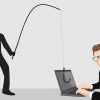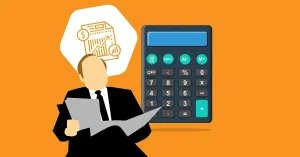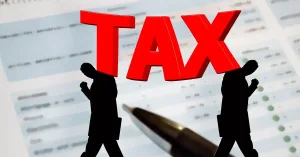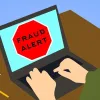If there was ever a time when accountants needed to be paying extra close attention to what is happening within the US government, it is now. Not only is tax season coming up very soon and accountants have to deal with the proper way to handle the first round of PPP loans and income tax implications involved with that for their small business clients, now we have a second stimulus package with new tax-related issues concerning PPP that accountants should be made aware of. This post from The Rules of Thumb blog from MoneyThumb will focus on the second stimulus package and all things PPP, (Payroll Protection Program).
Breaking down the PPP provisions
The return of the PPP is of particular interest to accountants, who played a significant role in helping millions of small businesses acquire $525 billion in forgivable loans during the five months the program was accepting applications, according to SBA reporting. The new round of PPP, or PPP2 as some are calling it, contains many similarities to the first round of the PPP but also has several important differences. The following is a high-level view of the PPP provisions.
Who is eligible to apply
PPP2 loans will be available to first-time qualified borrowers and, for the first time, to businesses that previously received a PPP loan. Specifically, previous PPP recipients may apply for another loan of up to $2 million, provided they:
- Have 300 or fewer employees.
- Have used or will use the full amount of their first PPP loan.
- Can show a 25% gross revenue decline in any 2020 quarter compared with the same quarter in 2019.
PPP2 also makes the forgivable loans available to Sec. 501(c)(6) business leagues, such as chambers of commerce, visitors’ bureaus, etc., and “destination marketing organizations” (as defined in the Act), provided they have 300 or fewer employees and do not receive more than 15% of receipts from lobbying. The lobbying activities must comprise no more than 15% of the organization’s total activities and have cost no more than $1 million during the most recent tax year that ended prior to Feb. 15, 2020.
PPP2 will also permit first-time borrowers from the following groups:
- Businesses with 500 or fewer employees that are eligible for other SBA 7(a) loans.
- Sole proprietors, independent contractors, and eligible self-employed individuals.
- Not-for-profits, including churches.
- Accommodation and food services operations (those with North American Industry Classification System (NAICS) codes starting with 72) with fewer than 300 employees per physical location.
The bill allows borrowers that returned all or part of a previous PPP loan to reapply for the maximum amount available to them.
PPP loan terms
As with PPP1, the costs eligible for loan forgiveness in PPP2 include payroll, rent, covered mortgage interest, and utilities. PPP2 also makes the following potentially forgivable:
- Covered worker protection and facility modification expenditures, including personal protective equipment, to comply with COVID-19 federal health and safety guidelines.
- Expenditures to suppliers that are essential at the time of purchase to the recipient’s current operations.
- Covered operating costs such as software and cloud computing services and accounting needs.
To be eligible for full loan forgiveness, PPP borrowers will have to spend no less than 60% of the funds on payroll over a covered period of either eight or 24 weeks — the same parameters PPP1 had when it stopped accepting applications in August.
PPP borrowers may receive a loan amount of up to 2.5 times their average monthly payroll costs in the year prior to the loan or the calendar year, the same as with PPP1, but the maximum loan amount has been cut from $10 million in the first round to the previously mentioned $2 million maximum. PPP borrowers with NAICS codes starting with 72 (hotels and restaurants) can get up to 3.5 times their average monthly payroll costs, again subject to a $2 million maximum.
A simplified application and other terms of the note
The new COVID-19 relief bill also:
- Creates a simplified forgiveness application process for loans of $150,000 or less. Specifically, a borrower shall receive forgiveness if a borrower signs and submits to the lender a certification that is not more than one page in length, includes a description of the number of employees the borrower was able to retain because of the loan, the estimated total amount of the loan spent on payroll costs, and the total loan amount. The SBA must create the simplified application form within 24 days of the bill’s enactment and may not require additional materials unless necessary to substantiate revenue loss requirements or satisfy relevant statutory or regulatory requirements. Borrowers are required to retain relevant records related to employment for four years and other records for three years, as the SBA may review and audit these loans to check for fraud.
- Repeals the requirement that PPP borrowers deduct the amount of any EIDL advance from their PPP forgiveness amount.
- Includes set-asides to support first- and second-time PPP borrowers with 10 or fewer employees, first-time PPP borrowers that have recently been made eligible, and for loans made by community lenders.
Tax deductibility for PPP expenses
The bill also specifies that business expenses paid with forgiven PPP loans are tax-deductible. This supersedes IRS guidance that such expenses could not be deducted and brings the policy in line with what the AICPA and hundreds of other business associations have argued was Congress’s intent when it created the original PPP as part of the $2 trillion Coronavirus Aid, Relief, and Economic Security (CARES) Act, P.L. 116-136 (see the Dec. 3 letter from the AICPA and state societies to congressional leaders).
The COVID-19 relief bill clarifies that “no deduction shall be denied, no tax attribute shall be reduced, and no basis increase shall be denied, by reason of the exclusion from gross income provided” by Section 1106 of the CARES Act (which has been redesignated as Section 7A of the Small Business Act). This provision applies to loans under both the original PPP and subsequent PPP loans.
While the CARES Act excluded PPP loan forgiveness from gross income, it did not specifically address whether the expenses used to achieve that loan forgiveness would continue to be deductible, even though they would otherwise be deductible. In April, the IRS issued Notice 2020-32, which stated that no deduction would be allowed under the Internal Revenue Code for an expense that is otherwise deductible if the payment of the expense results in forgiveness of a PPP loan because the income associated with the forgiveness is excluded from gross income for purposes of the Code under CARES Act Section 1106(i).
In November, the IRS then expanded on this position by issuing Rev. Rul. 2020-27, which held that a taxpayer computing taxable income on the basis of a calendar year could not deduct eligible expenses in its 2020 tax year if, at the end of the tax year, the taxpayer had a reasonable expectation of reimbursement in the form of loan forgiveness on the basis of eligible expenses paid or incurred during the covered period. Treasury Secretary Steven Mnuchin also argued against businesses being able to deduct business expenses paid with forgiven, tax-free PPP funds, calling it an unwarranted double benefit for businesses.
The AICPA disputed this interpretation of the CARES Act loan forgiveness rules, arguing that it was not Congress’s intent to disallow the deduction of otherwise deductible expenses. Congress has now agreed with that position.





















Add comment